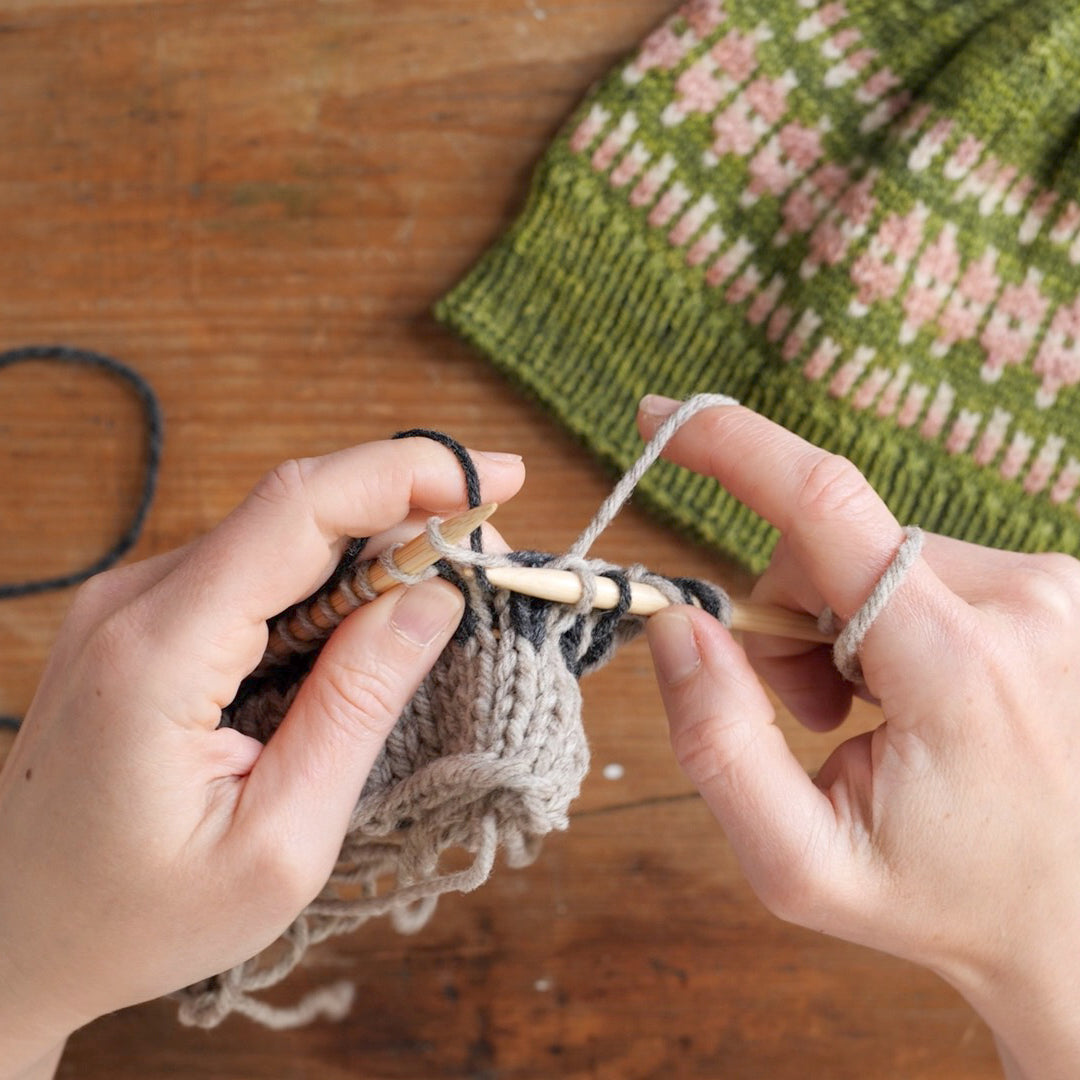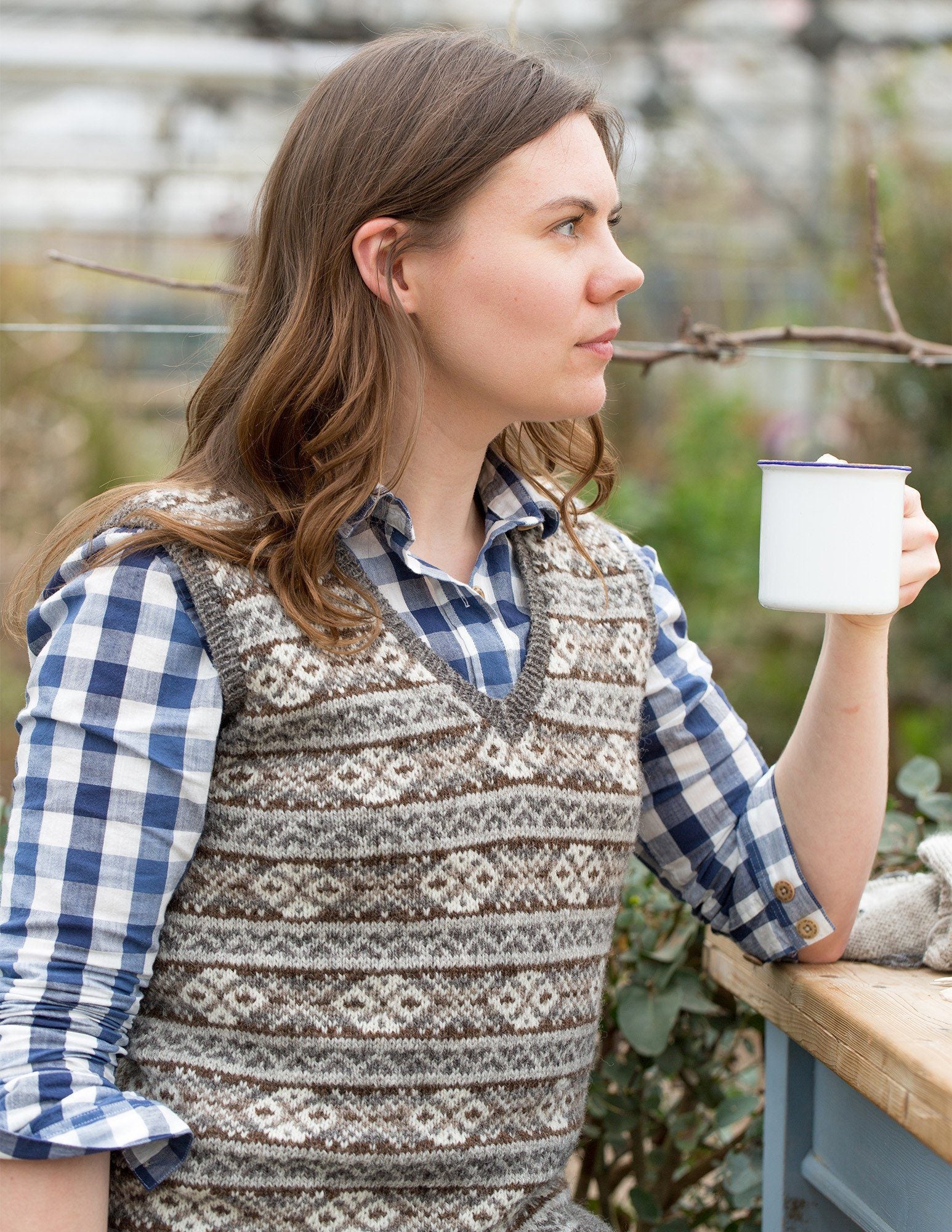
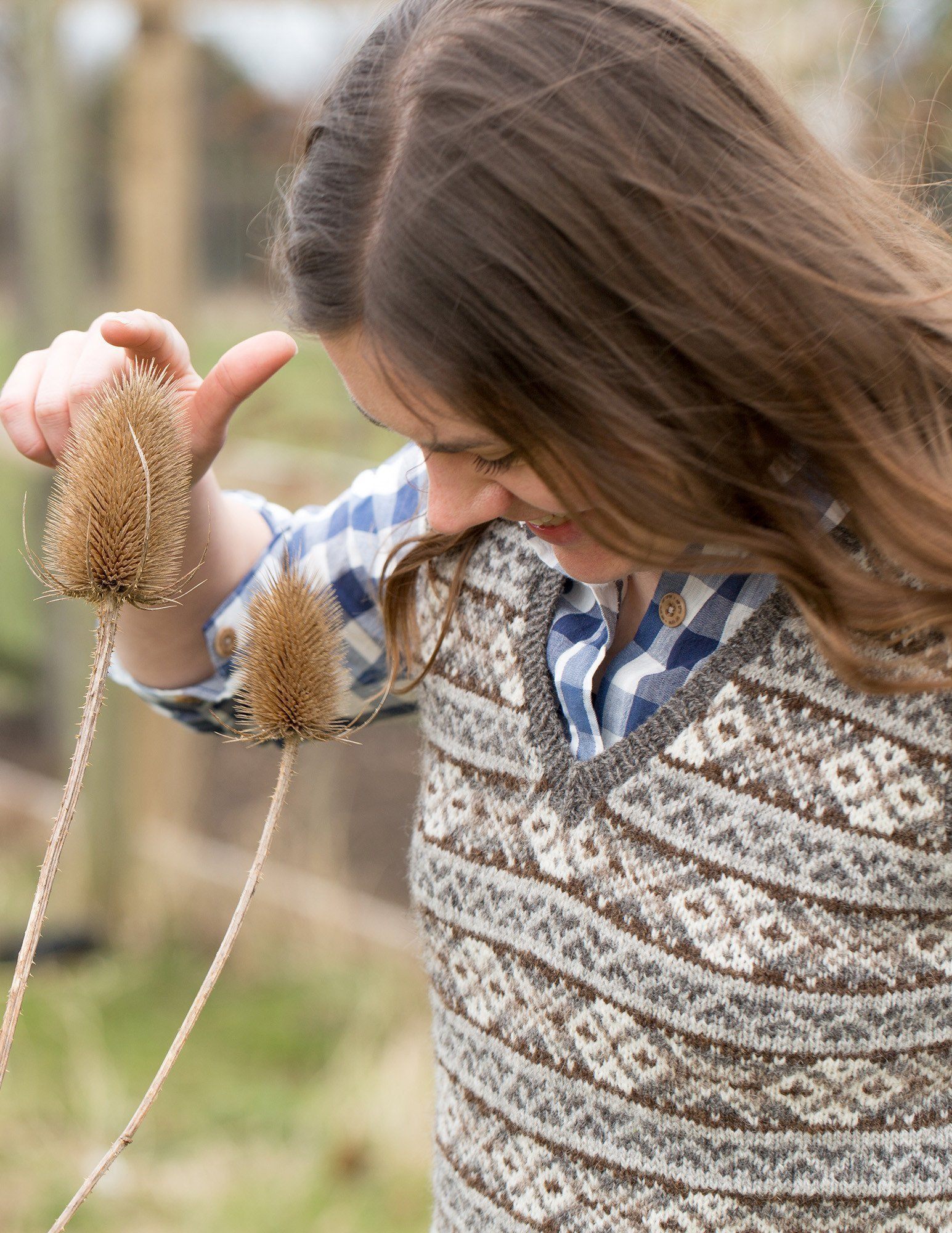
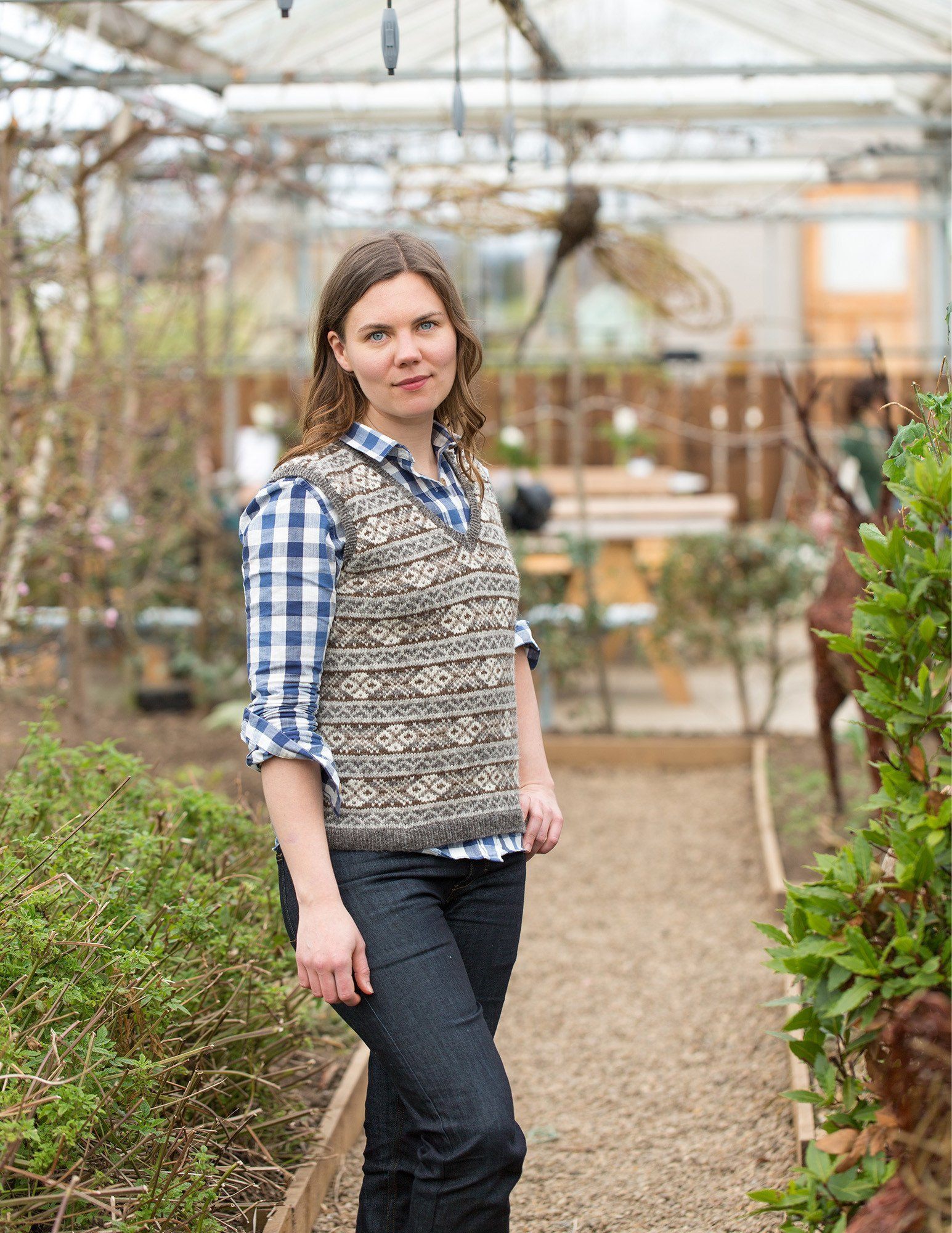
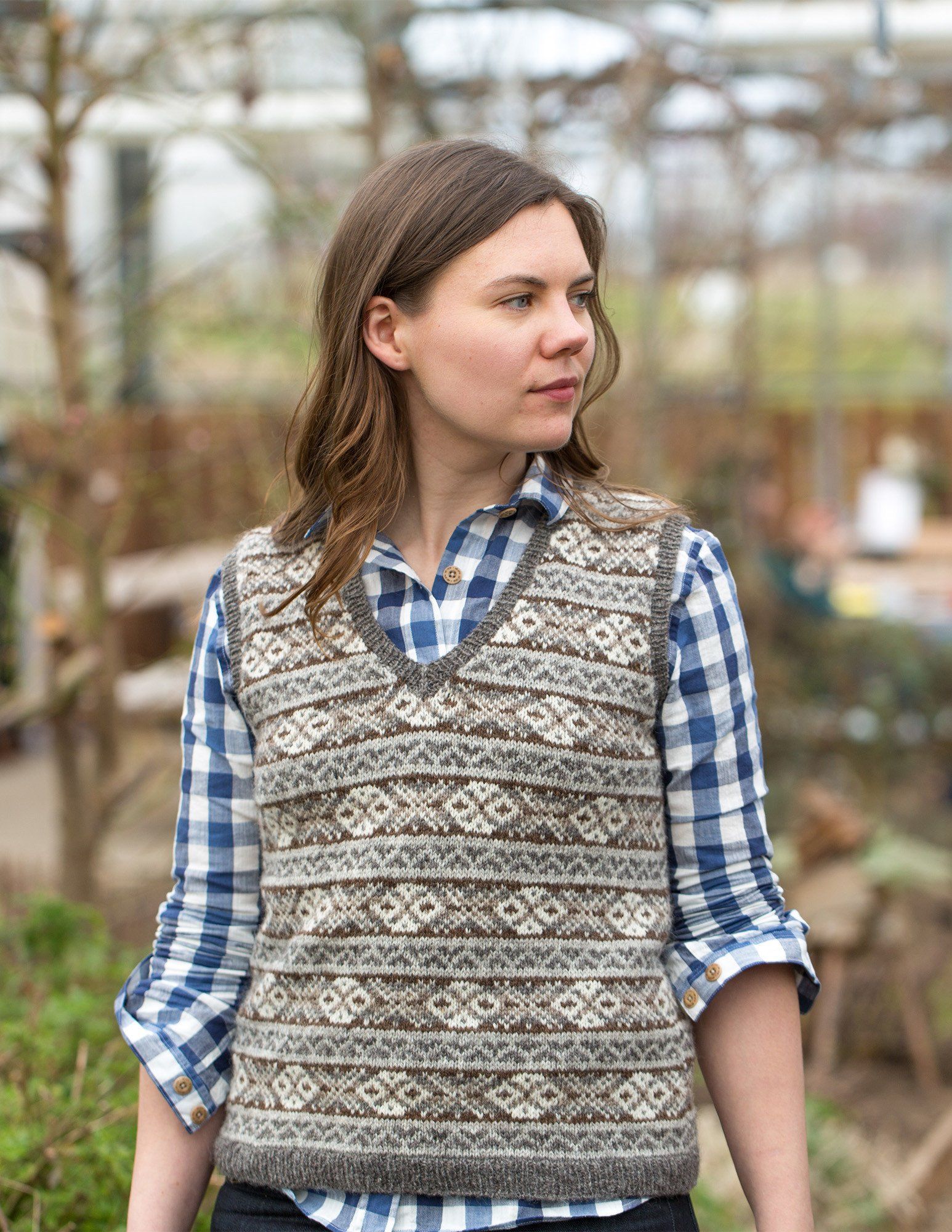
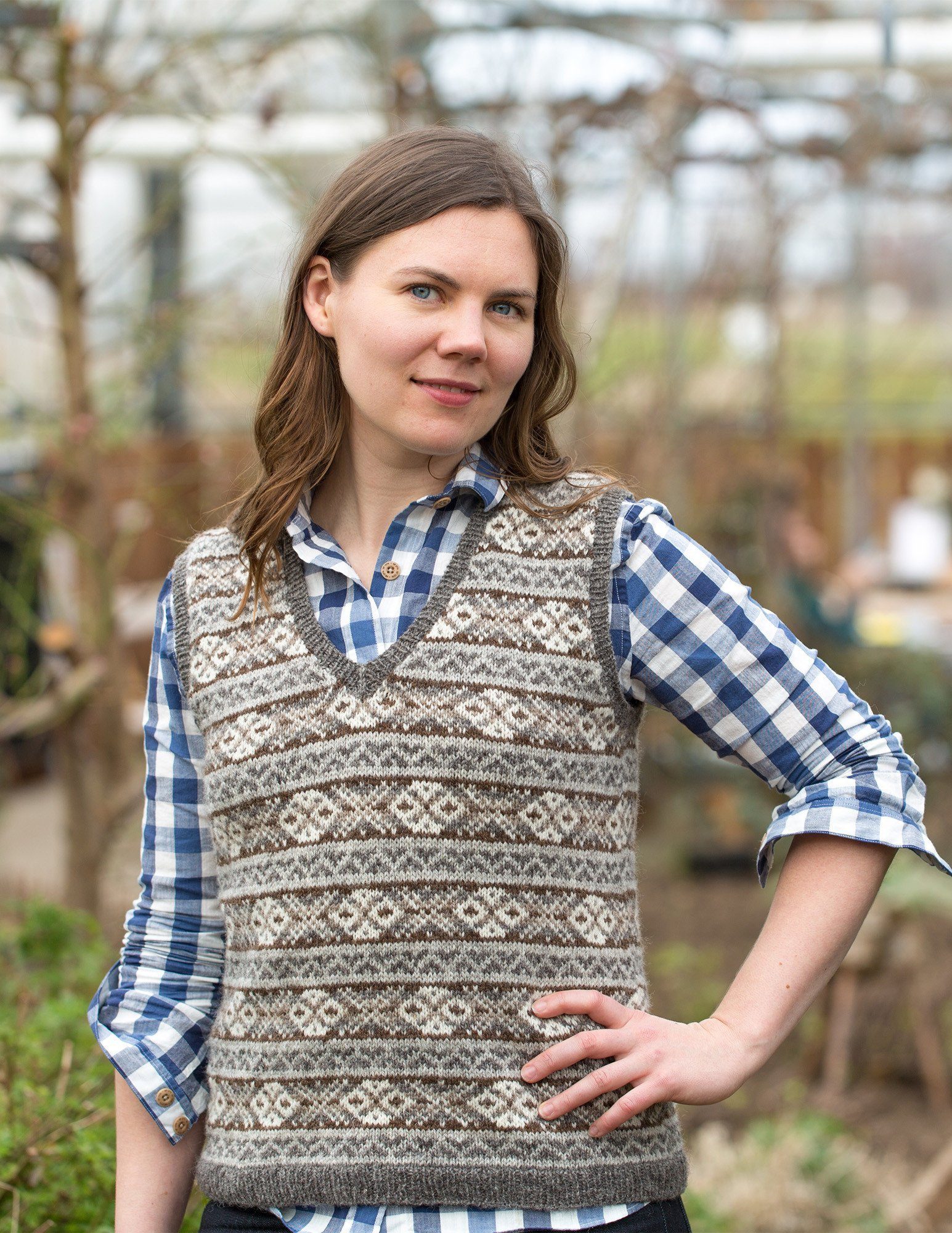
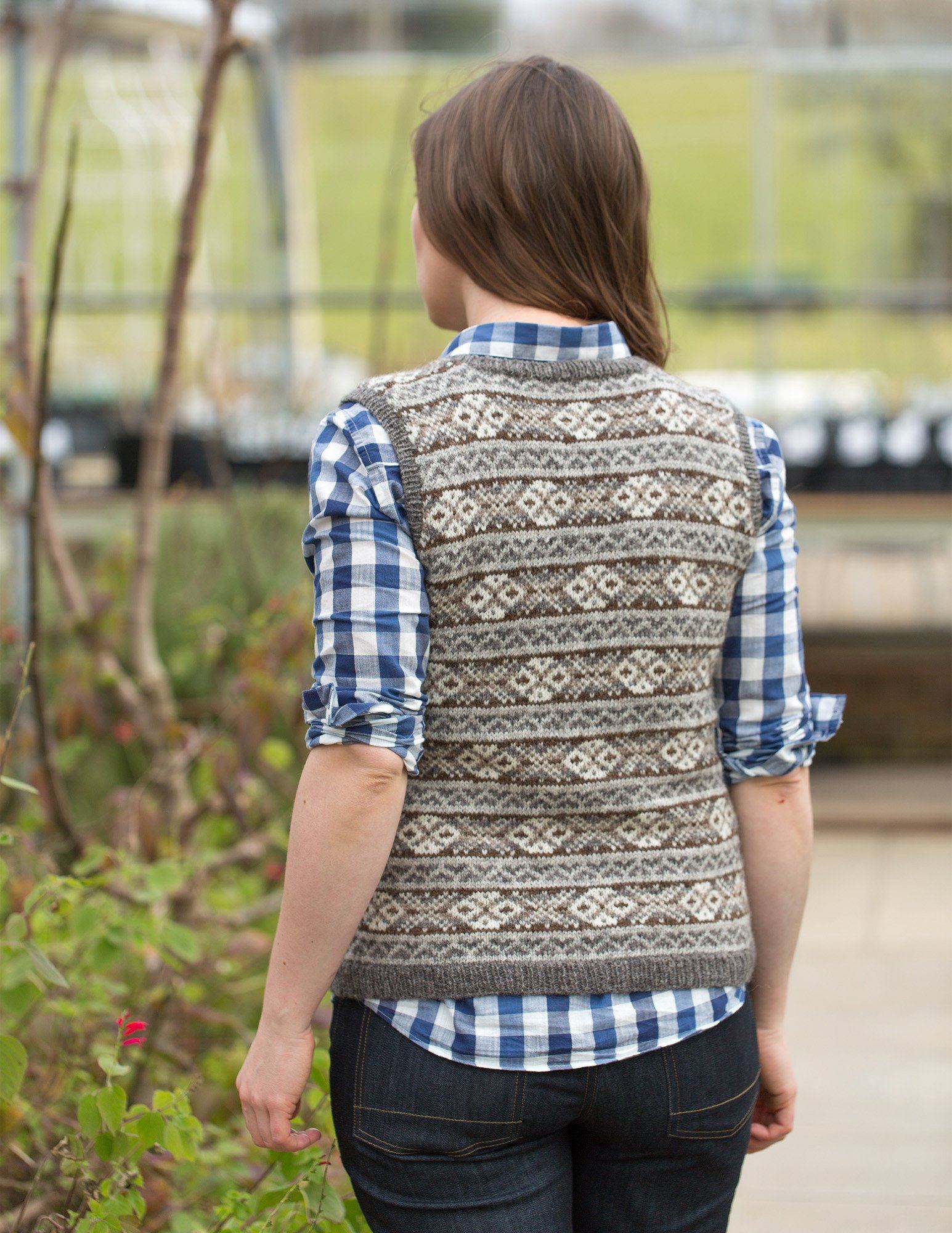
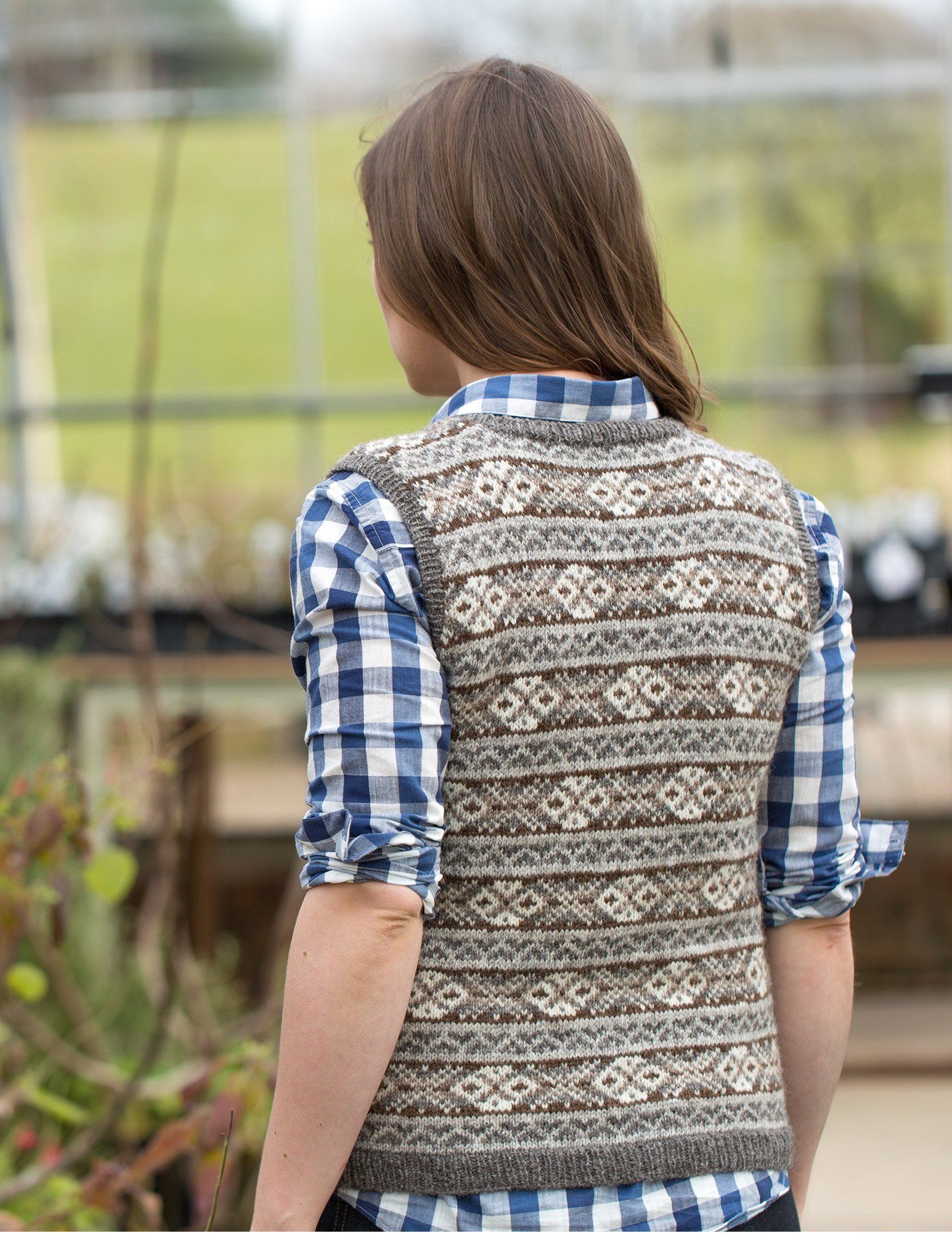
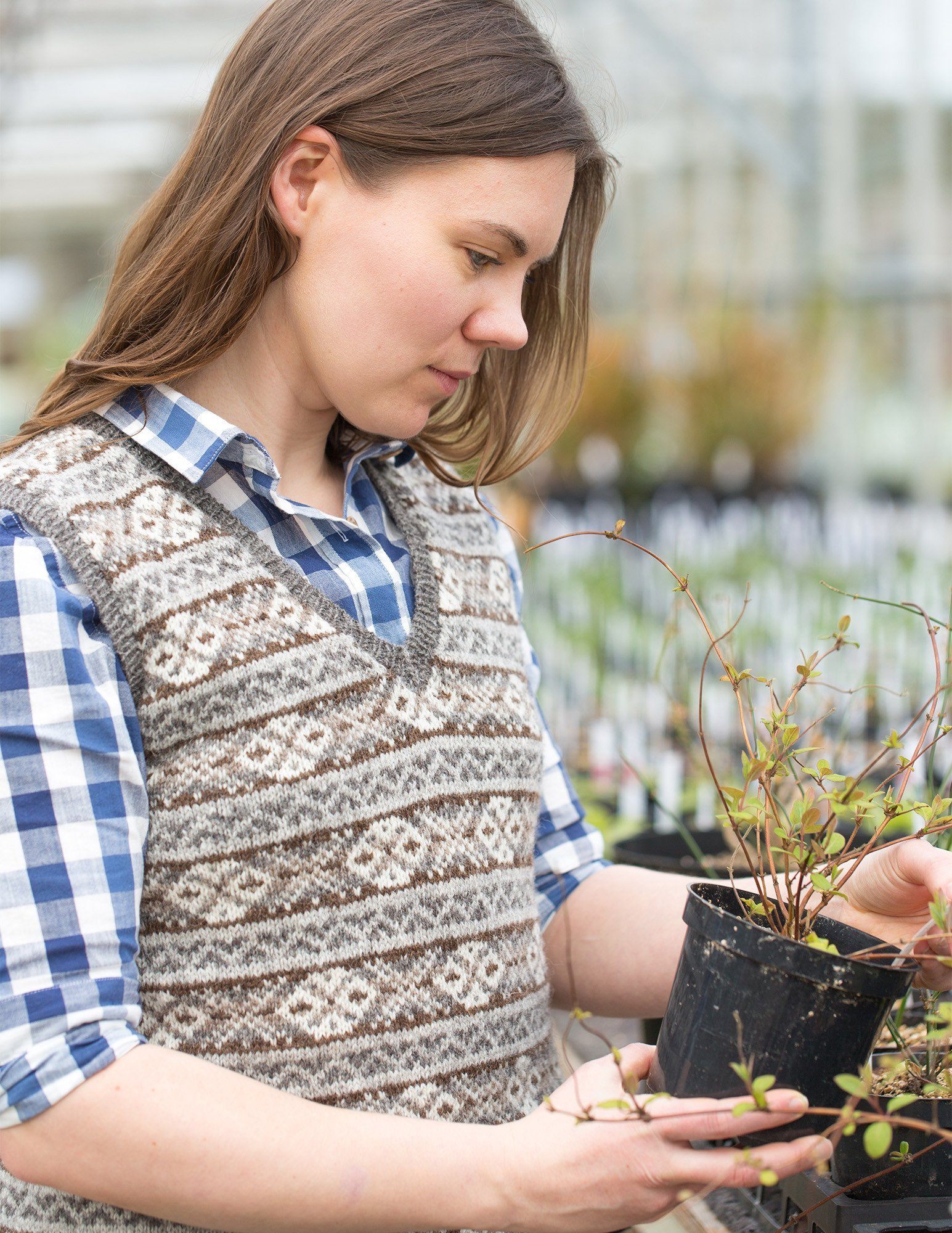
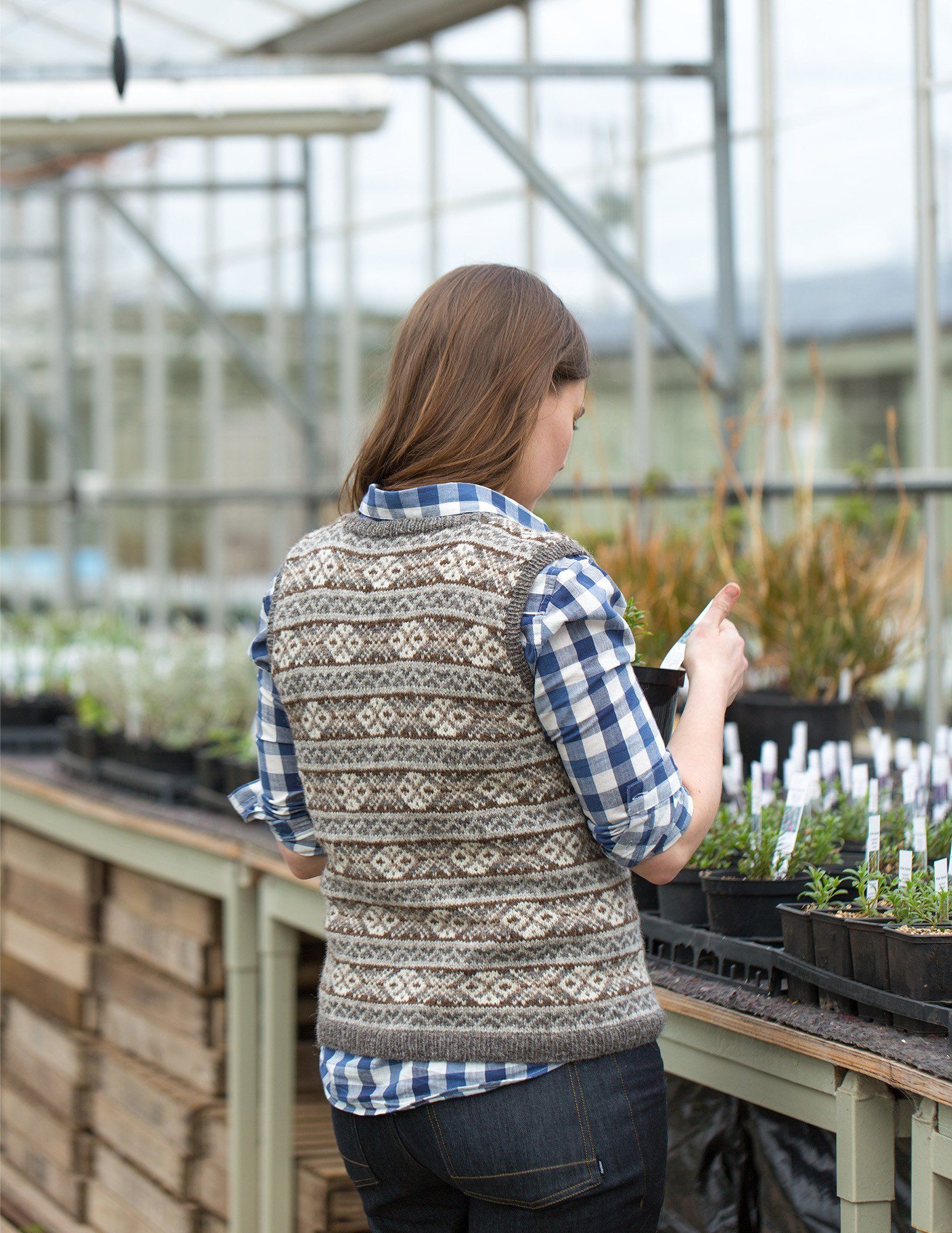
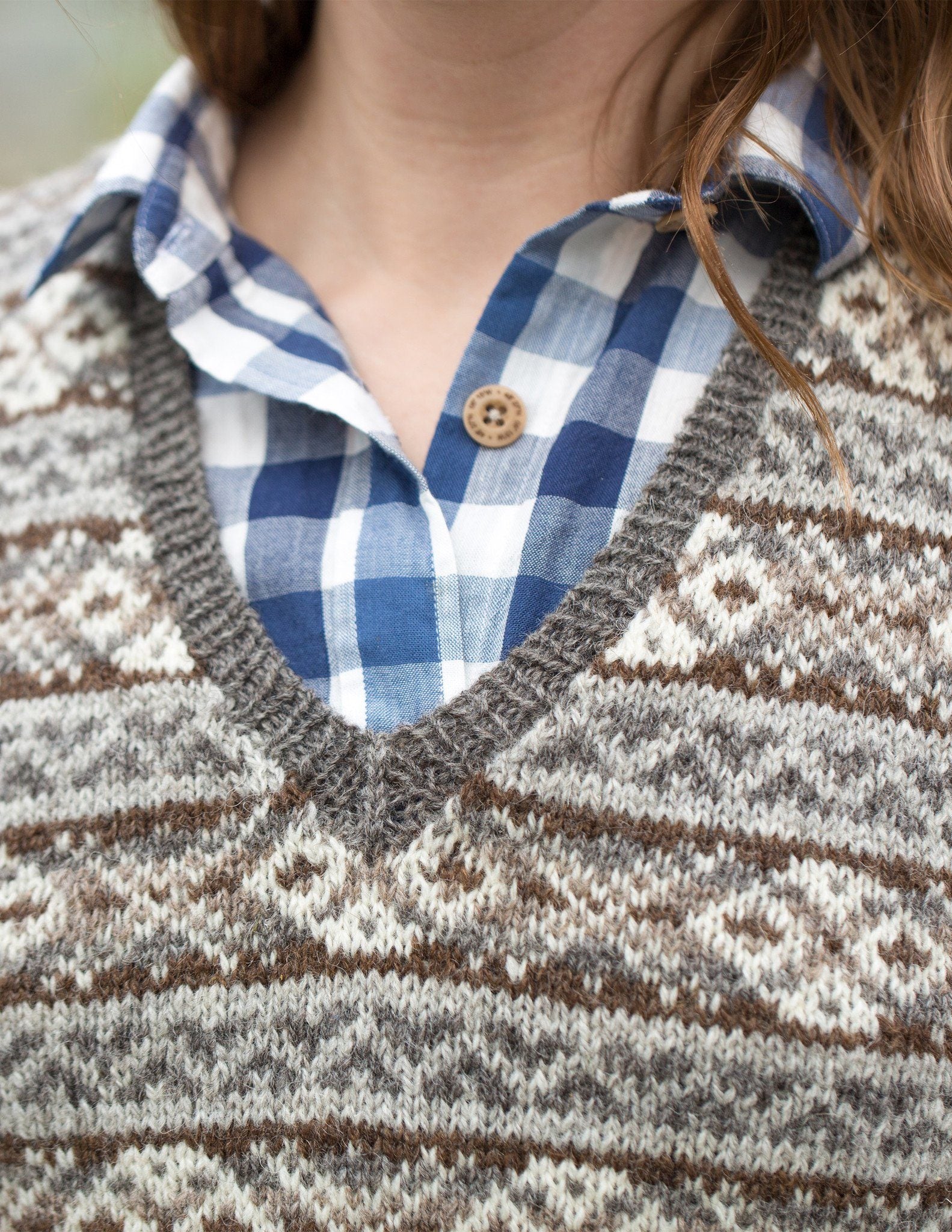
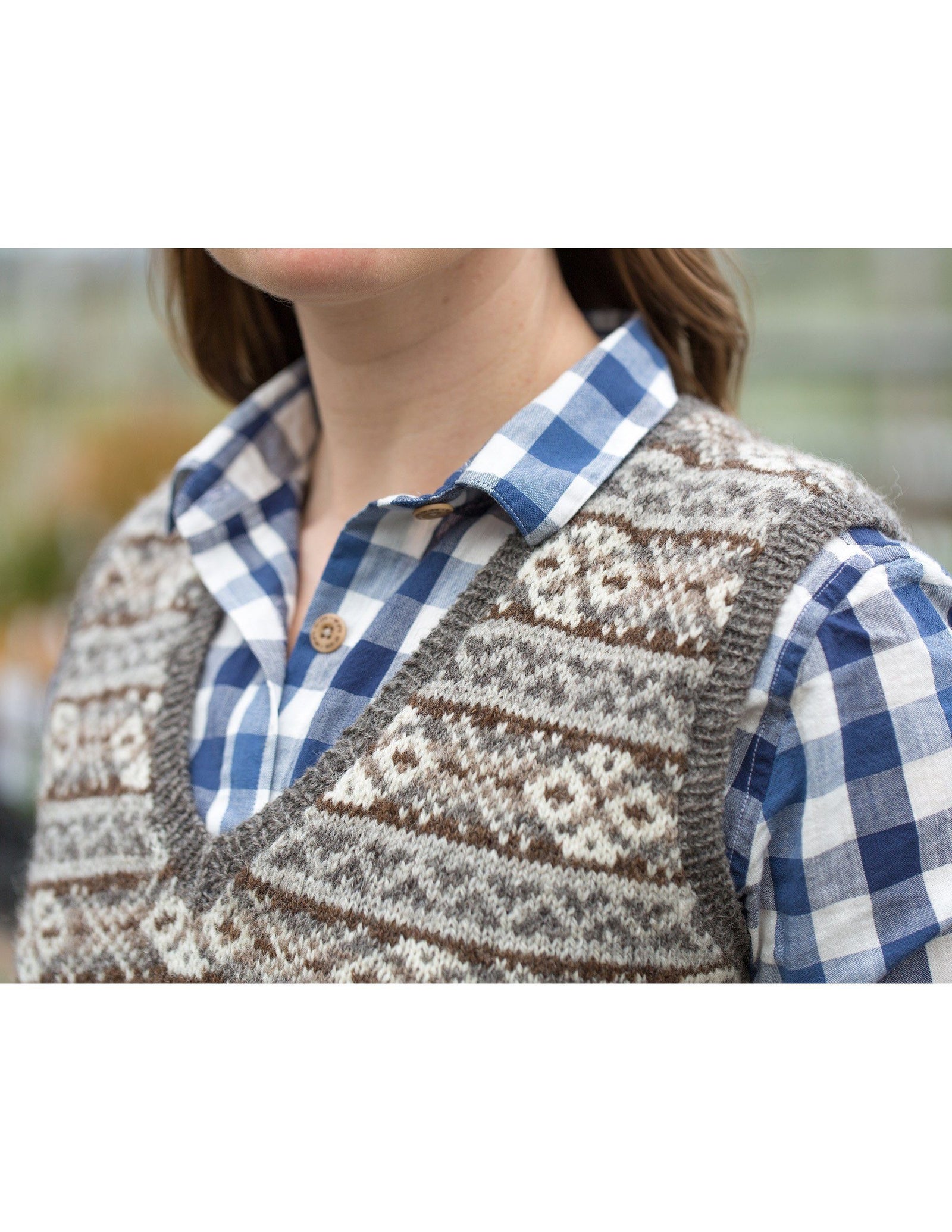
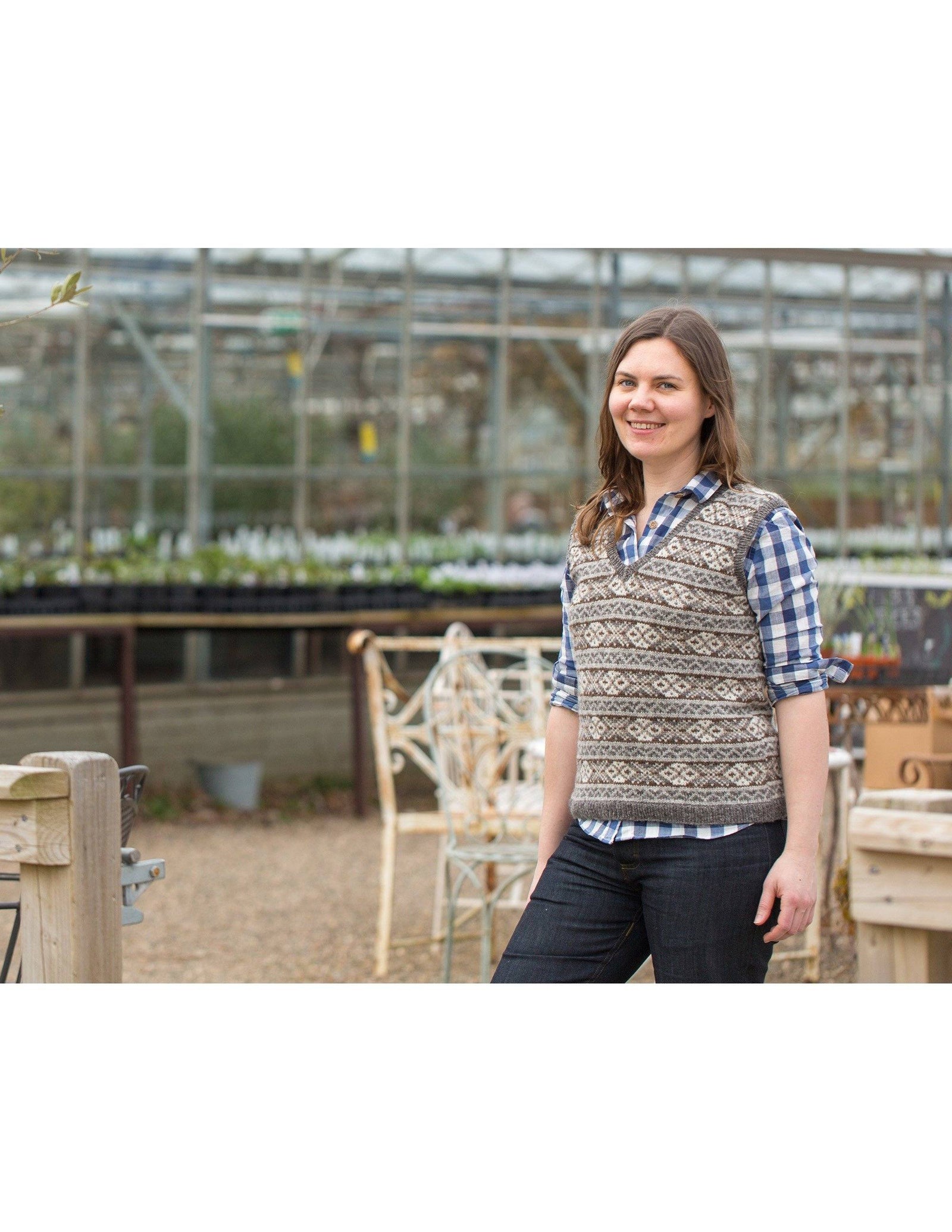
Bruntsfield
- Lace weight yarn
- Also available on Ravelry
Bruntsfield is worked from the bottom up in the round. Above the underarm additional steek stitches are added to bridge the gaps at the neck and armholes to avoid working stranded colourwork back and forth. When the knitting is complete these are finished with crochet and cut open, detailed illustrated instructions are included for this process. After cutting the steeks open, stitches are picked up around the armholes and neck and ribbed bands are worked. A crisp angle at the ‘v’ on the neck is created by working mitred decreases.
OTHER SUPPLIES
For larger sizes you may find it more comfortable to use a longer circular for the body up to the underarms.
Working the armhole ribbing may require additional needles in the smaller size depending on whether you prefer to work small circumferences on magic loop, dpns or two circulars.
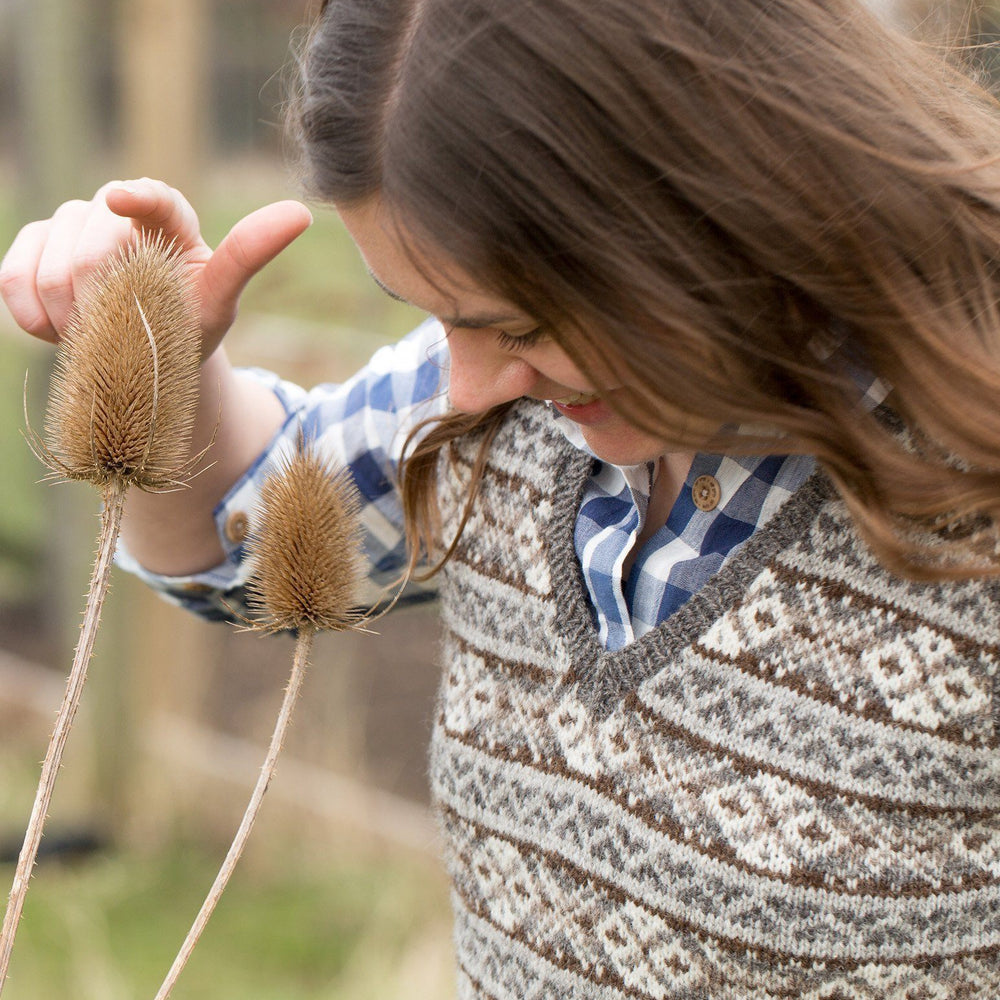
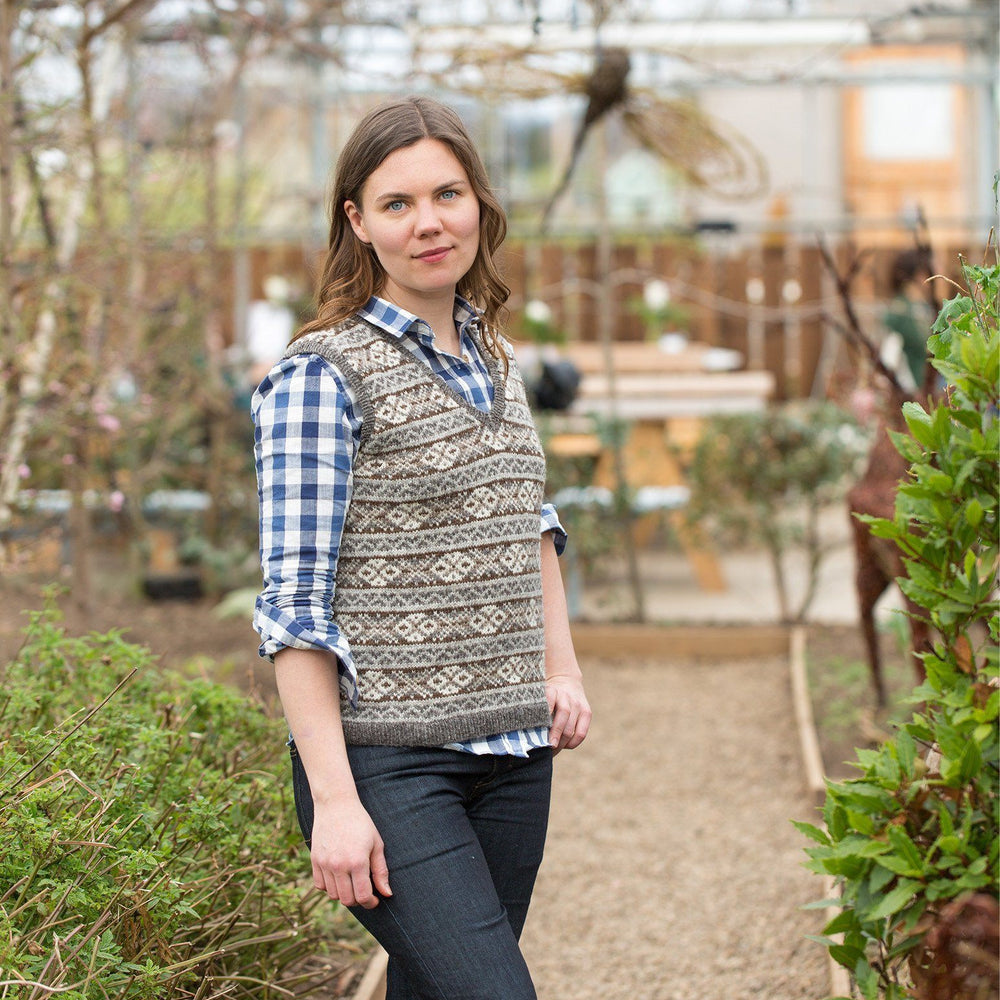
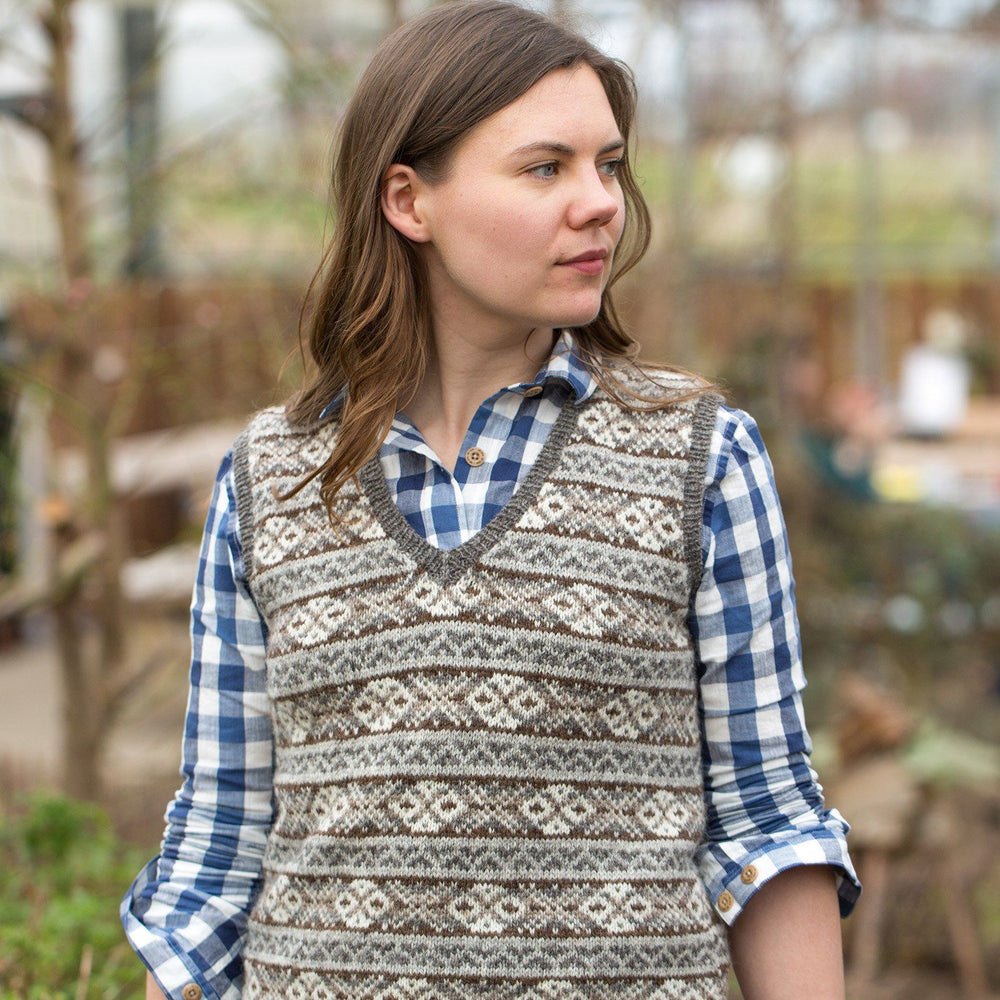
Details
Selecting colours is one of the most exciting aspects of stranded colourwork and can create incredibly different looks but it can also be challenging. To make planning your own combinations easier a colour in chart and quick reference palette are included.
Directions for reinforcing the steeks with crochet are provided. This method requires a relatively ‘sticky’ wool that has not been superwash treated.
Skills for knitting this project
Build your skills by following the links to our clear step-by-step tutorials.
- knitting, purling
- casting on
- ssk decreases
- k2tog decreases
- three-needle bind off
- working small circumferences in the round
- working in the round
- colourwork (using a chart)
- tubular bind off
- picking up stitches
Gauge
28 sts and 32 rows = 4"/ 10 cm in charted colourwork pattern in the rnd on larger needle
Sizing
30¾[34¼, 37¾, 41¼] (44½, 48, 51½) [54¾, 58¼] finished chest circumference.
Shown in size 34¼ with no ease.
Learn all of the skills you need to make Bruntsfield with our beginner colourwork course. The Stranded Colourwork Basics course is a 4 week self-guided online knitting course, with continued access to the course so that you can return to each chapter for a refresher, again and again, whenever you need.
Supplies
Yarn
Fingering weight / 4ply wool yarn.
Shown in Shetland Organics Jumper - 2ply (100% wool, 186yds / 170m, 50g)
Needles and notions
Size 2½ US / 3mm 24" / 60cm circular
Size 4 US / 3.5mm 24" / 60cm circular
Size US C-D / 3mm crochet hook
Version information























